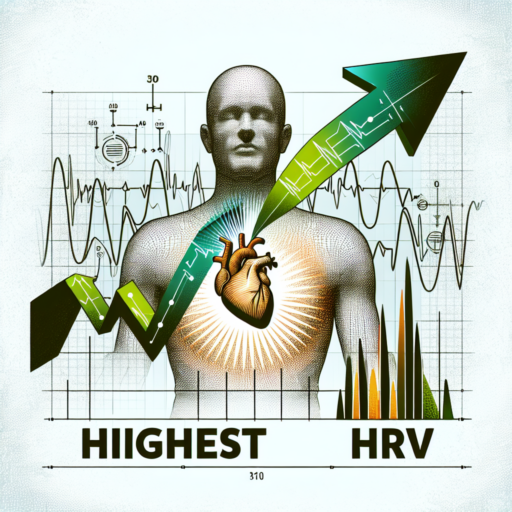Can you calculate calories burned by heart rate?
Understanding whether you can calculate calories burned by heart rate is pivotal for those looking to optimize their fitness routines. The simple answer is yes; heart rate can serve as an insightful indicator of caloric expenditure. This is because there’s a direct relationship between heart rate intensity and the rate at which calories are burned. Your body requires more energy as your heart rate increases, thereby raising the calorie count you burn during activities.
Factors Influencing Calorie Calculation
Different factors affect how calories burned are calculated through heart rate. Variables such as age, gender, weight, and fitness level play crucial roles. Advanced heart rate monitors and fitness watches incorporate these variables to provide more accurate estimations of calories burned. It’s important to note that without factoring in these elements, the calculations might not reflect the true caloric expenditure.
Using Heart Rate to Optimize Workouts
To leverage heart rate data for calculating calorie burn, employing a heart rate monitor or a smartwatch equipped with this feature is indispensable. By analyzing the data, individuals can adjust their workout intensity to stay within specific heart rate zones that optimize fat burning. This method isn’t just about tracking the calories but also about enhancing overall workout efficiency. Maintaining an optimal heart rate is key to achieving fitness goals, whether it’s for weight loss, endurance building, or improving cardiovascular health.
How many calories do I burn if my heart rate is 150?
The number of calories you burn when your heart rate is at 150 beats per minute (bpm) can be a crucial piece of information for those focused on weight loss or improving cardiovascular health. The amount of calories burned is influenced by several factors, including your age, weight, fitness level, and the duration of your activity at this heart rate.
Generally, a higher heart rate during exercise indicates more intense activity, which in turn can lead to a higher calorie burn. For an average adult, maintaining a heart rate of 150 bpm through aerobic exercises like running or cycling can result in a significant calorie burn. However, it’s essential to use heart rate zones as a guide to ensure you’re exercising within a safe and effective range.
To get a rough estimate of the calories burned at a heart rate of 150 bpm, you can use various online calculators or wearable fitness trackers. These tools often require inputs such as your age, weight, gender, and the duration of your exercise. While these estimates can give you a general idea, remember that individual metabolic rates and body composition can lead to variances in calorie expenditure.
Do I burn more calories when my heart rate is higher?
The relationship between heart rate and calorie burn is a topic of interest for many fitness enthusiasts and individuals looking to optimize their workouts for weight loss. Essentially, when your heart rate is higher, your body is typically working harder, which can lead to an increased caloric expenditure. This concept is grounded in the way our bodies consume energy during physical activity.
Understanding the Heart Rate Zones is crucial for recognizing how different intensities of exercise influence calorie burn. These zones range from light activity to high-intensity exercises, with each zone targeting specific training outcomes. High-intensity exercise causes your heart rate to soar, which not only strengthens your cardiovascular system but also boosts your metabolism, leading to higher calorie burn both during and after the workout. This phenomenon is often referred to as the ‘afterburn effect’ or Excess Post-exercise Oxygen Consumption (EPOC).
However, it’s important to note that while a higher heart rate correlates with increased calorie expenditure, the overall impact on weight loss also depends on various other factors. These include the duration of the activity, the type of exercise performed, and individual metabolic rates. For instance, activities like HIIT (High-Intensity Interval Training) are known to elevate heart rate and maximize calorie burn efficiently within a shorter timeframe compared to steady-state cardio exercises.
No se han encontrado productos.
How many calories do you burn with VO2 max?
Understanding the relationship between VO2 max and calorie expenditure is pivotal for athletes and fitness enthusiasts aiming to optimize their workouts. VO2 max, or maximal oxygen uptake, is the maximum rate at which an individual can use oxygen during intense exercise. It’s a measure of exercise capacity and aerobic endurance. The higher the VO2 max, the more oxygen your body can utilize during exercise, leading to more calories burned.
However, calculating the exact number of calories burned solely based on VO2 max can be complex, as it also depends on factors such as age, gender, weight, and fitness level. Generally, individuals with a higher VO2 max can burn calories more efficiently during high-intensity workouts. This is because their bodies can utilize more oxygen to produce energy, which in turn increases calorie expenditure.
Estimating Calorie Burn
To estimate the number of calories burned through exercises that improve VO2 max, such as running or cycling, you can use various online calculators or fitness watches. These tools often require input such as your weight, the duration of the workout, and the intensity level. While not pinpoint accurate, they give a reasonable estimation of calorie burn.
Incorporating high-intensity interval training (HIIT) or continuous high-intensity exercises into your routine can significantly impact your VO2 max levels. As your endurance improves and VO2 max increases, you’ll notice not just enhancements in your aerobic capacity, but potentially more calories burned during each workout session, contributing to overall fitness and weight management goals. Remember, though, individual results can vary, and it’s essential to couple any exercise regimen with a balanced diet for optimal health and performance.



